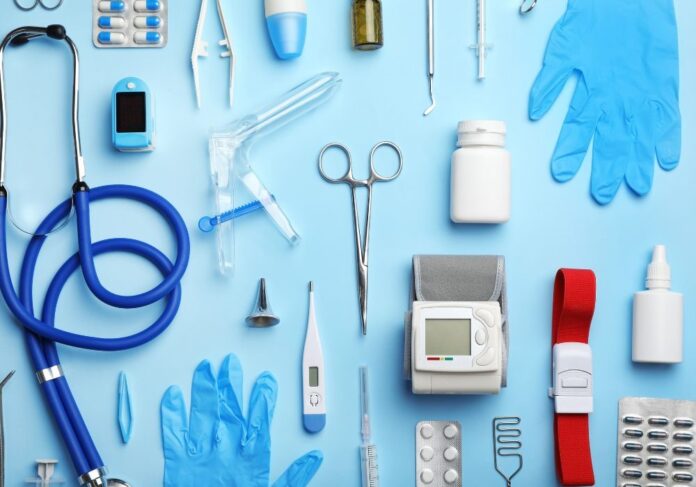Choosing the best medical devices for your facility is crucial to the health and wellness of your patients. Here are some factors to consider.
It is no secret that everything relating to the medical field is quite expensive—from devices to medications to equipment, the prices can easily rise. That is why it can be challenging for administrators to find the best tools at a reasonable price.
Some might opt for well-known names, assuming they are the best, while others might choose a device based on price. The options and choices can quickly become overwhelming. To make the process more consolidated and simpler, here are some factors to consider when selecting a medical device.
Manufacturer Knowledge
There are countless manufacturers in the medical field whose products, services, and knowledge vary, so it can be difficult to find the best of the best. Moreover, in this day and age, we must avoid fake products, as most sales occur online, where scamming is easier. Choose developers who can provide helpful and accurate product knowledge. You might consider working with a biomedical service provider, as they will test your piece of equipment to ensure it is a high-quality, detailed device that is safe to use.
Inventory Variety
As you search for a manufacturer, you want to choose one with a wide variety of inventory; this allows you freedom and flexibility to explore different equipment. Usually, manufacturers with a large list will work with suppliers they trust to create the best products. With more options, you can make an informed decision about the best equipment for your facility. Moreover, when you select a manufacturer you trust, you can feel more comfortable working with them again for other equipment you’ll require in the future.
Manufacturing Process
One aspect you cannot disregard when choosing a manufacturer is consistency in terms of product quality. Practitioners utilize medical devices in various situations, from surgery to implantations. That is why you must select a manufacturer whose production process is as efficient as possible.
One aspect to consider is your manufacturer’s deburring process for their medical devices. Some manufacturers might remove burrs by hand, leaving more room for human error. All products must look identical as any deviation could spell injury or discomfort for a patient.
Customer Service
It may seem out of the blue that customer service would be on the list of factors to consider when selecting a medical device, but it is for a good reason. When you are in the business side of the medical field, you cannot disregard the countless people who will use the devices you choose. Any issue or minor inconvenience could arise with your device that may require replacements or a new component.
When issues arise, you must ensure their rectification as soon as possible—any holdup can result in huge backups for patients and practitioners. That is why you want a manufacturer with top-notch customer service. Look for responsive customer service reps who meet demands, assist with equipment setup, and provide guaranteed warranties. Try to choose a company whose warranty grants a grace period of around 60–90 days, as most equipment can have issues during setup.
Read Also
- How to Drive Growth Through Customer Centricity in HealthcareThe world of healthcare is changing in big ways. Consumers are now stepping up and taking charge of their health journeys. This change is happening now for important reasons. The U.S. health and wellness market is huge, projected to be over $6 trillion in 2025. This growth is fueled by rising out-of-pocket costs and more… Read more: How to Drive Growth Through Customer Centricity in Healthcare
- Maximizing Digital Reach for Podiatry Clinics in Local HealthcareMaximizing Digital Reach for Podiatry Clinics in Local Healthcare As the healthcare industry evolves, mobile marketing becomes indispensable for practitioners. Podiatry clinics, focusing on foot and ankle care, must adapt to digital strategies to engage patients effectively. Implementing tailored SEO practices is crucial for these clinics to thrive in an increasingly competitive market. Digital marketing… Read more: Maximizing Digital Reach for Podiatry Clinics in Local Healthcare
- Leveraging Virtual Medical Assistants to Maximize Operational Efficiency in HealthcareIn the increasingly complex and fast-paced world of healthcare, operational efficiency is critical. Doctors and healthcare administrators are faced with numerous challenges, from managing patient scheduling and medical billing to adhering to stringent regulatory compliance and insurance claims processing. These tasks, while essential, often divert time and resources away from the core mission of providing… Read more: Leveraging Virtual Medical Assistants to Maximize Operational Efficiency in Healthcare
- Optimizing CT Protocols: The Hidden Key to Efficiency and Cost Savings in RadiologyIntroduction: Why CT Protocol Optimization Matters Computed Tomography (CT) is a cornerstone of modern diagnostic imaging, providing critical information across nearly every medical specialty. However, maximizing the value of CT — both clinically and financially — requires more than just advanced hardware. The real secret lies in the optimization of CT protocols. When CT protocols… Read more: Optimizing CT Protocols: The Hidden Key to Efficiency and Cost Savings in Radiology
- Hospital Discharge Accuracy Improves With Daily Advisor InvolvementThe hospital discharge process has a big effect on patient recovery, hospital efficiency, and finances. It requires careful planning and clear communication between team members to make sure patients get the right care when they leave the hospital. Having physician advisors involved at this stage can improve the discharge process by spotting problems that need… Read more: Hospital Discharge Accuracy Improves With Daily Advisor Involvement
- Understanding Clinical Trials: What to Learn and the RoadblocksClinical trials are research studies conducted to determine the efficacy of medical, surgical or behavioral interventions. They are the most commonly used way that researchers assess whether new treatments, drugs or medical devices are safe and effective for use in humans. There are strict protocols governing these studies, and all of this is done in such a… Read more: Understanding Clinical Trials: What to Learn and the Roadblocks







